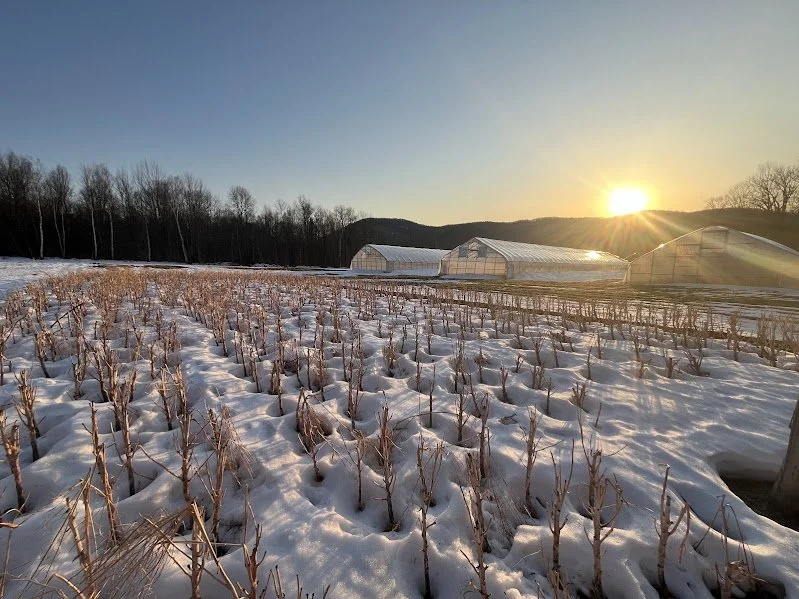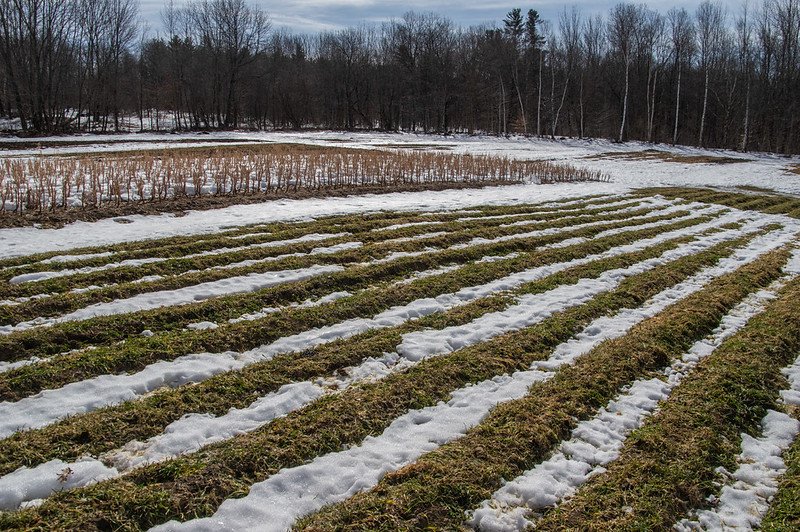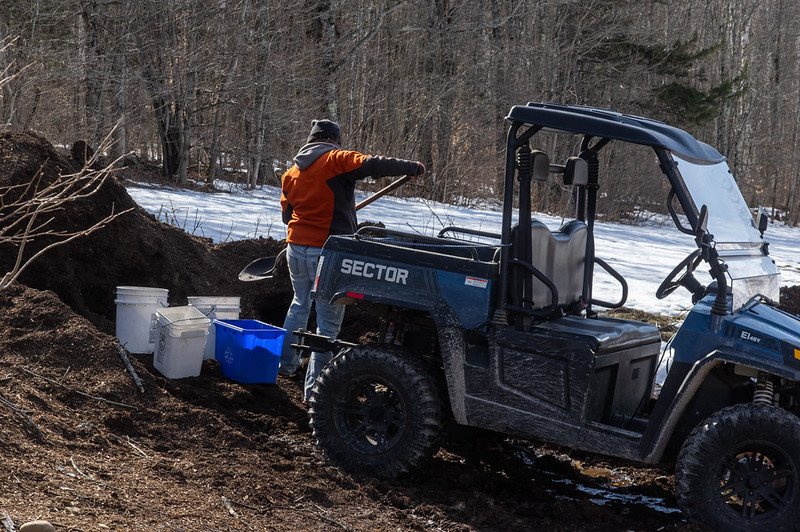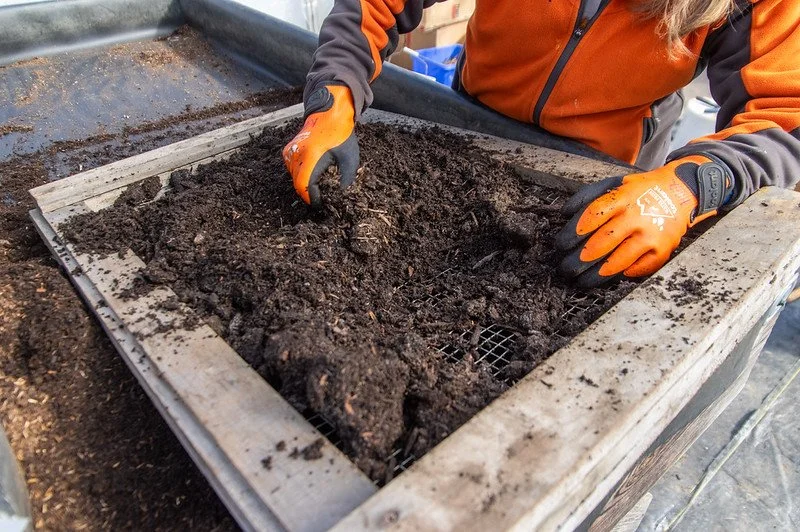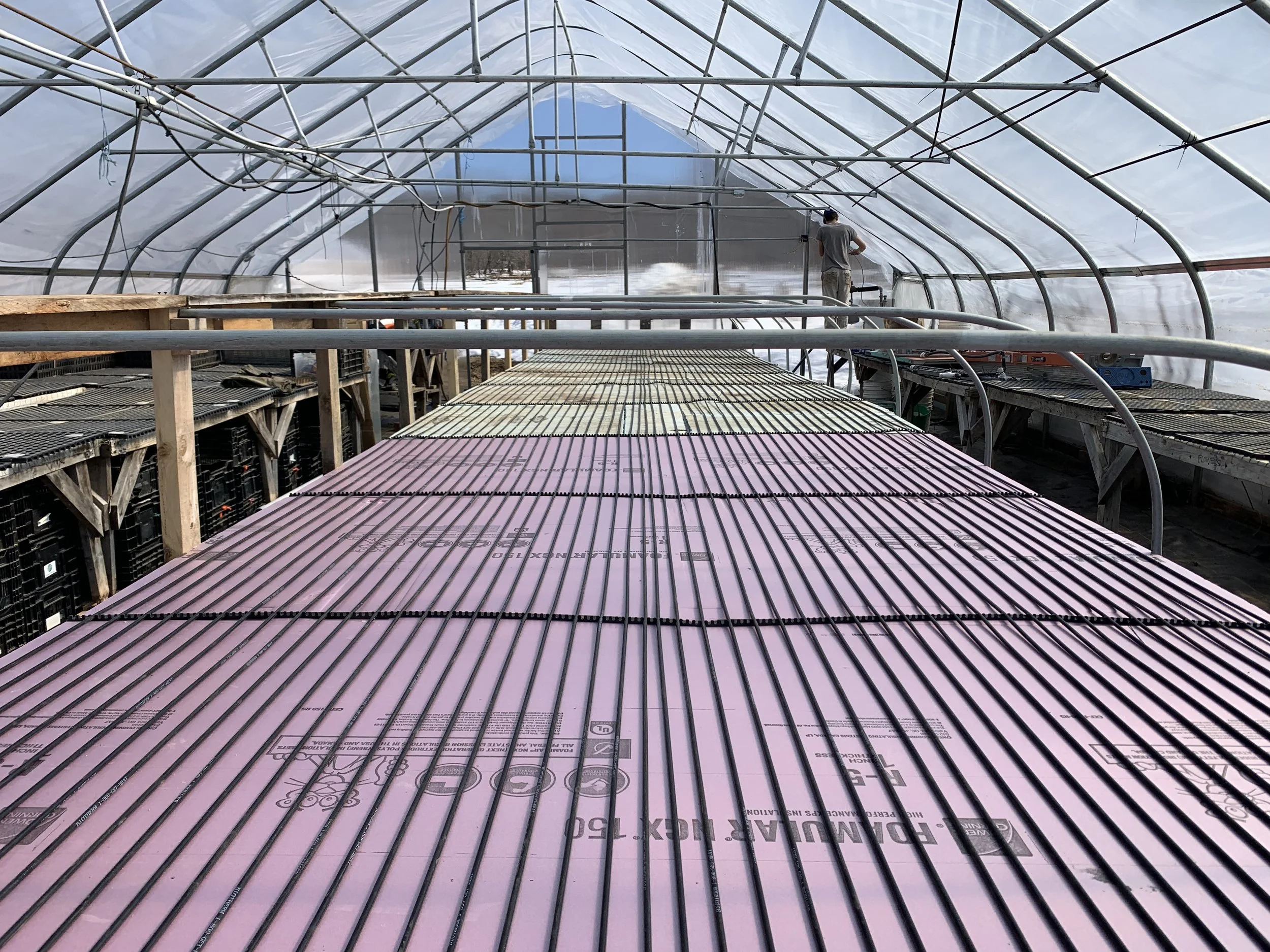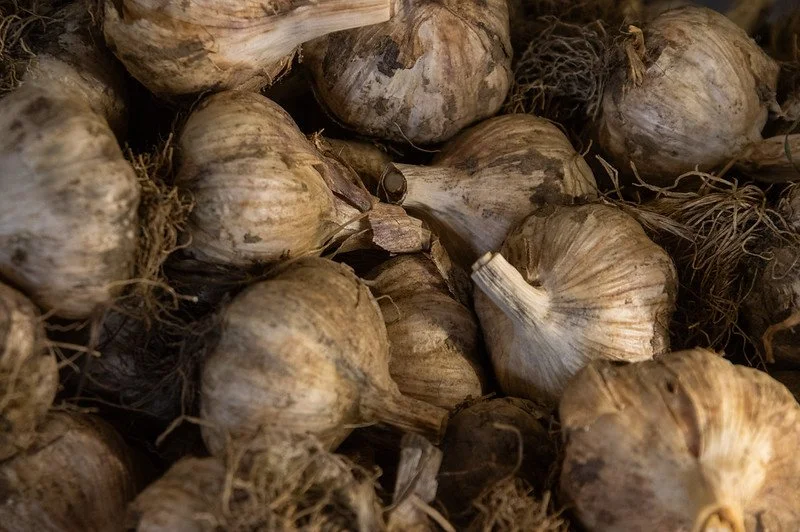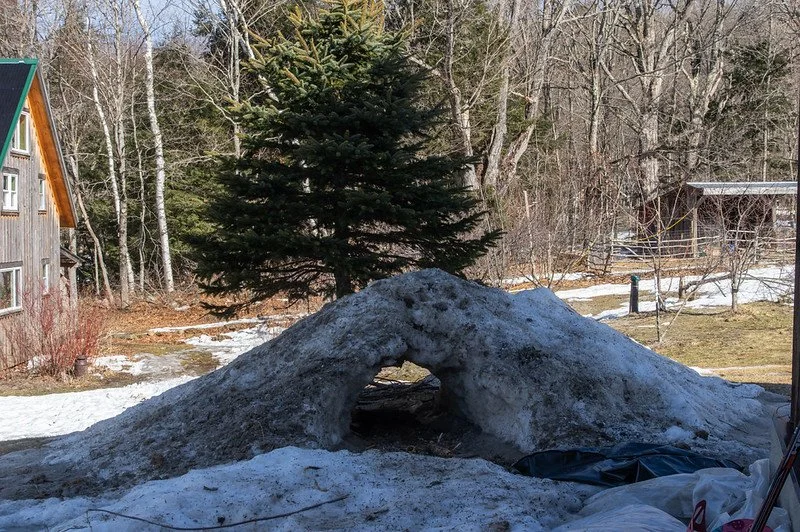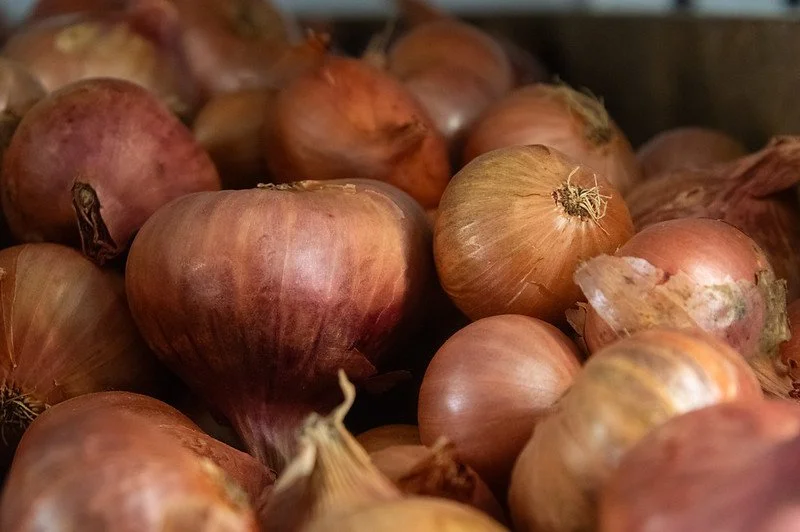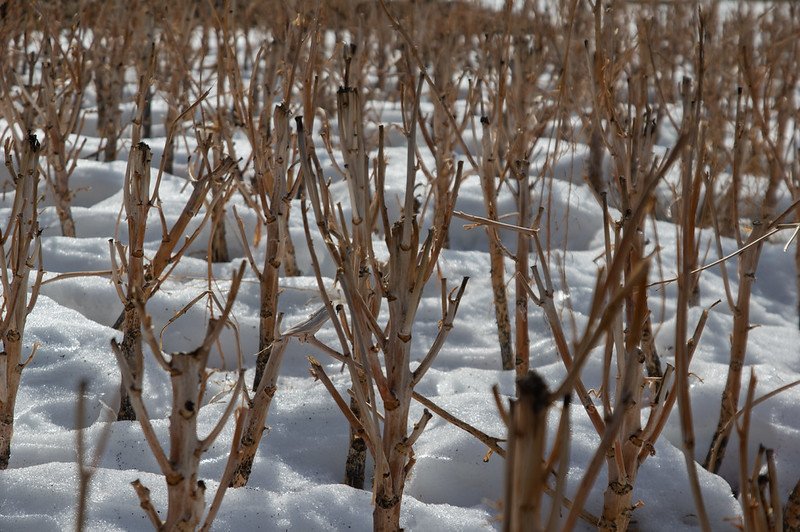3rd Week of the Spring CSA Season: Week of March 19th
snow still hugging the dead broccolini stems, photo by Ryan
This Week’s Availability
This week we will have:
Greens: spinach, claytonia, mesclun mix, curly kale, lacinato kale, parsley, and green cabbage
Roots: carrots, yellow potatoes, rutabaga, Gilfeather turnip, red beets, chioggia beets, watermelon radish, daikon radish
Alliums: onions, garlic, shallots, and leeks
snow melting off the mulched ridges, photo by Adam Ford
Farm News
This week we did a LOT of seeding. Tomatoes, peppers, eggplant, and basil are all cozy and in cute little trays under grow lights in the grow room in the root cellar. Sometimes I look at the few trays they start in as little seedlings, and I am in awe that these few trays will produce thousands of pounds of fruits. Doesn’t matter how many springs I have gotten to be a veggie farmer: seeds amaze me every time. We also have parsley, leeks, onions, cilantro, beets, lettuce, and other cold hardy things growing in the propagation house. Our propagation house is still “cold,” just warmed by the sun right now as Ryan and Cindy finish overhauling and repairing our heated table in there. The large center table in our propagation house was the only source of heat we had for well over 10 years, which is incredibly uncommon: most farms rely on heating the air with a fossil fuel source. We use (solar-powered) electricity to heat water that runs through the tiny tubes that snake around on top of insulation on our table. And we roll a plastic cover right over those plants to keep the heat close. That system served us really well for so long, but a few years ago we decided we wanted a backup heat option to heat the air space, since our entire growing season relies on a pretty non-traditional system not failing, and we added a wood pellet heater to provide that backup. In the meantime, the table heating system has experienced over a decade of wear and tear, after some 20-somethings with much less experience installed it with little guidance. So this was the year we finally are getting to update it. It’s looking great, and hopefully by the end of this week, it will be up and running again so our cold hardy seedlings can get a little warm boost under their trays.
We also continue to seed new plantings in the tunnel, intercropped with the greens we will get to harvest for a few more weeks before ripping them out. Leah put in a bunch of pea shoot plantings at the end of this week. It’ll be fun to have pea shoots to harvest in a couple weeks.
And sometimes I want to report field notes from the kitchen of a farmer. Nothing terribly exciting was experimented with this week, but we did have a delicious, simple meal that we hadn’t tried before on a particular busy/chaotic night this week: Cooked up some noodles, tossed them with olive oil and a ton of fresh garlic. Then added the same amount of claytonia as noodles, so it was equal parts claytonia/pasta, and shredded parmesan over it all. It was simple, quick, filling, and fresh feeling having those lively claytonia stems, and tender claytonia leaves lighten up the noodles. The other fun veggie experiment for the week was using shredded Gilfeather turnip and potato as a crust for a quiche: We shredded equal parts Gilfeather turnip and potato, toss it with a little salt and olive oil and pressed it into a pie pan. I baked that slow and low to crisp it up, kind of like a hashbrown. And then I poured in the veggie/egg/cheese mixture and continued baking until the quiche was cooked.
Have a great week!
-ESF Team: Ryan, Kara, K2, Cindy, Taylor, Leah, and Natalie (and Sky and Soraya)
Ryan hooking up the new header for the heated table, photo by Adam Ford
K2 prepping compost to add to the potting mix, photo by Adam Ford
plumbing to move the hot water to the table, photo by Adam Ford
K2 bringing in buckets of compost to mix with the potting mix, photo by Adam Ford
we pass the compost through a screen so it mixes in well, photo by Adam Ford
Cindy and Ryan have been repairing and updating our amazing hot water heated seed starting table that had served as our sole source of heat for our propagation house for the first 10+ years of this operation, photo by Cindy
most of the time the tunnels are covered under heavy duty row cover, photo by Adam Ford
garlic, photo by Adam Ford
heated table filling fast with trays, photo by Ryan
snow has melted off these cover cropped ridges, photo by Adam Ford
snow tunnel remains as the pile melts, photo by Adam Ford
after the insulation was pieced together, and the tubing was replaced, they rolled a cover over the entire table so we can more easily clean the tables during the season, and potting mix won’t get stuck between the tubes, photo by Adam Ford
on warm, sunny days we remove the covers to improve airflow and growth, photo by Ryan
shallots, photo by Adam Ford
onions seeded, photo by Adam Ford
pea shoots after soaking, before planting, photo by Adam Ford
broccolini stems, photo by Adam Ford

